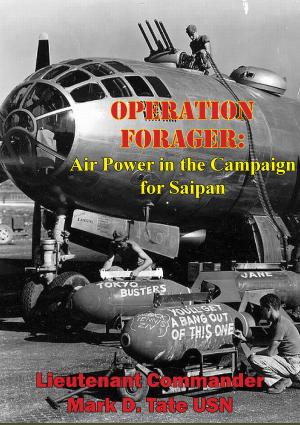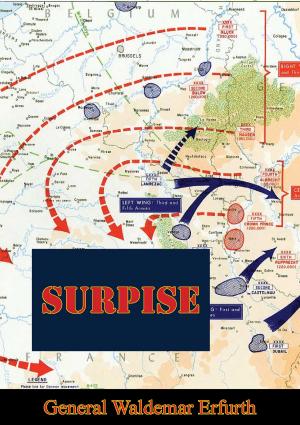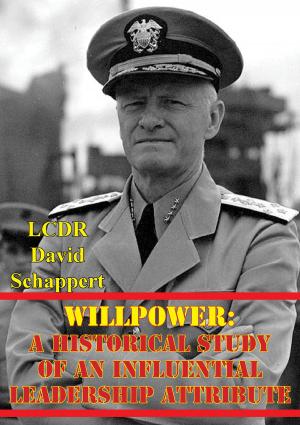Air Interdiction In World War II, Korea, And Vietnam – An Interview With Generals Partridge Smart & Vogt Jr.
Nonfiction, History, Germany, European General, Military, United States| Author: | Gen. Earle E. Partridge | ISBN: | 9781786255655 |
| Publisher: | Tannenberg Publishing | Publication: | November 6, 2015 |
| Imprint: | Tannenberg Publishing | Language: | English |
| Author: | Gen. Earle E. Partridge |
| ISBN: | 9781786255655 |
| Publisher: | Tannenberg Publishing |
| Publication: | November 6, 2015 |
| Imprint: | Tannenberg Publishing |
| Language: | English |
Three distinguished USAF Generals offer their wisdom on Aerial Interdiction.
In the long evolution of American air power in the twentieth century the professional experiences and judgments of these senior air leaders are both representative and instructive. Over one hundred years of military service are contained in this oral history interview, almost all of it concerned with the application of a new kind of military force—air power—to the oldest of military questions: how to defeat enemy armies. In discussing their experiences in World War II, Korea, and Vietnam, these men focus on those air campaigns which have come to be considered classics of air interdiction: in World War II, Operation Strangle in Italy, March-May 1944, and operations in support of the Normandy Invasion, April-June 1944; in the Korean War, all campaigns, especially Operation Strangle, May-October 1951; in the Vietnam War, the air interdiction part of the Rolling Thunder air campaign, March 1965-November 1968, the air campaign in Southern Laos, 1965-1972, and especially the air interdiction portions of Linebacker I and II, May-October and December 1972. In addition, the discussion turns in the latter stages to the impact of electronics—laser guided weapons, electronic suppression devices, drone air planes, and immediate air intelligence—on air interdiction operations. Generals Partridge, Smart, and Vogt offer definitions, clarifications, examples, generalizations, and advice. Their purpose, and that of the Office of Air Force History, is to further the dialogue among military professionals so that the past can help us to meet the challenges of the future.
Three distinguished USAF Generals offer their wisdom on Aerial Interdiction.
In the long evolution of American air power in the twentieth century the professional experiences and judgments of these senior air leaders are both representative and instructive. Over one hundred years of military service are contained in this oral history interview, almost all of it concerned with the application of a new kind of military force—air power—to the oldest of military questions: how to defeat enemy armies. In discussing their experiences in World War II, Korea, and Vietnam, these men focus on those air campaigns which have come to be considered classics of air interdiction: in World War II, Operation Strangle in Italy, March-May 1944, and operations in support of the Normandy Invasion, April-June 1944; in the Korean War, all campaigns, especially Operation Strangle, May-October 1951; in the Vietnam War, the air interdiction part of the Rolling Thunder air campaign, March 1965-November 1968, the air campaign in Southern Laos, 1965-1972, and especially the air interdiction portions of Linebacker I and II, May-October and December 1972. In addition, the discussion turns in the latter stages to the impact of electronics—laser guided weapons, electronic suppression devices, drone air planes, and immediate air intelligence—on air interdiction operations. Generals Partridge, Smart, and Vogt offer definitions, clarifications, examples, generalizations, and advice. Their purpose, and that of the Office of Air Force History, is to further the dialogue among military professionals so that the past can help us to meet the challenges of the future.

![Cover of the book Leaping The Atlantic Wall - Army Air Forces Campaigns In Western Europe, 1942-1945 [Illustrated Edition] by Gen. Earle E. Partridge](https://www.kuoky.com/images/2015/november/300x300/9781786252456-4Yqi_300x.jpg)



![Cover of the book Airborne Operations In World War II, European Theater [Illustrated Edition] by Gen. Earle E. Partridge](https://www.kuoky.com/images/2015/november/300x300/9781786252975-y4Y7_300x.jpg)









![Cover of the book U.S. Marines In Battle: Al-Qaim, September 2005-March 2006 [Illustrated Edition] by Gen. Earle E. Partridge](https://www.kuoky.com/images/2014/august/300x300/9781782896838-V3md_300x.jpg)